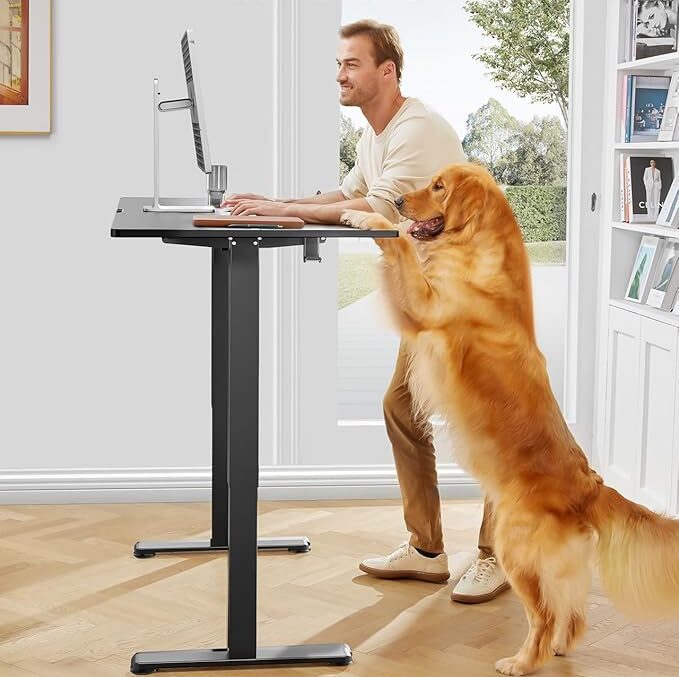How to choose an ergonomic desk

An ergonomic desk is more than just a piece of furniture; it’s an investment in your health and comfort, especially if you spend long hours sitting. A well-designed desk can help prevent pain, improve posture, and boost productivity. Let’s explore the essential factors to consider when selecting the ideal ergonomic desk for your workspace.
1. Height Adjustability
One of the most crucial features of an ergonomic desk is its ability to adjust to your height. A desk that’s too high can strain your neck and shoulders, while one that’s too low can lead to back pain. Look for a desk with a wide range of adjustable heights to find the perfect position for your body.
2. Keyboard and Mouse Platform
Your keyboard and mouse should be at a comfortable height to avoid wrist strain. Ideally, your forearms should be parallel to the floor when typing. Consider a desk with a built-in keyboard and mouse platform that can be adjusted independently to find the perfect position.
3. Monitor Height
The height of your monitor is equally important. The top of the screen should be at eye level to prevent neck strain. Look for a desk with a monitor arm or a monitor stand that allows you to adjust the height of your screen.
4. Desk Depth
The depth of your desk should be sufficient to accommodate your arms and legs comfortably. A desk that’s too shallow can lead to cramped elbows and knees. Aim for a desk depth of at least 28 inches.
5. Material and Build Quality
The material and build quality of your desk are essential factors to consider. Choose a desk made from durable materials that can withstand daily use. Look for a desk with a sturdy frame and stable legs to ensure it won’t wobble or tip over.
6. Additional Features
Some ergonomic desks offer additional features that can enhance your comfort and productivity. Consider features like cable management solutions, built-in power outlets, and adjustable tilt options.
7. Workspace Layout
Think about how your desk will fit into your overall workspace. Consider factors like available space, lighting, and the placement of other furniture. A well-planned layout can contribute to a more comfortable and productive working environment.
Tips for Optimal Ergonomics:
- Take Breaks: Even with the best ergonomic setup, it’s essential to take regular breaks to stretch and avoid fatigue.
- Maintain Good Posture: Sit up straight with your feet flat on the floor. Avoid slouching or crossing your legs.
- Adjust Your Chair: Make sure your chair is at the right height and provides adequate lumbar support.
- Consider a Footrest: If your feet don’t reach the floor comfortably, a footrest can help improve your posture and circulation.
By carefully considering these factors, you can choose an ergonomic desk that will help you work more comfortably and efficiently. Remember, investing in a quality ergonomic desk is an investment in your long-term health and well-being.
(Photo credit of ErGear Height Adjustable standing desk here>> )
Have you tried using an ergonomic desk? Did it help you alleviate back pain issues? Share with us your experience.
The information provided on this website is intended for informational purposes only and should not be considered medical advice. It is not a substitute for professional medical advice, diagnosis, or treatment. Always seek the advice of a qualified healthcare provider with any questions you may have regarding a medical condition or treatment.






